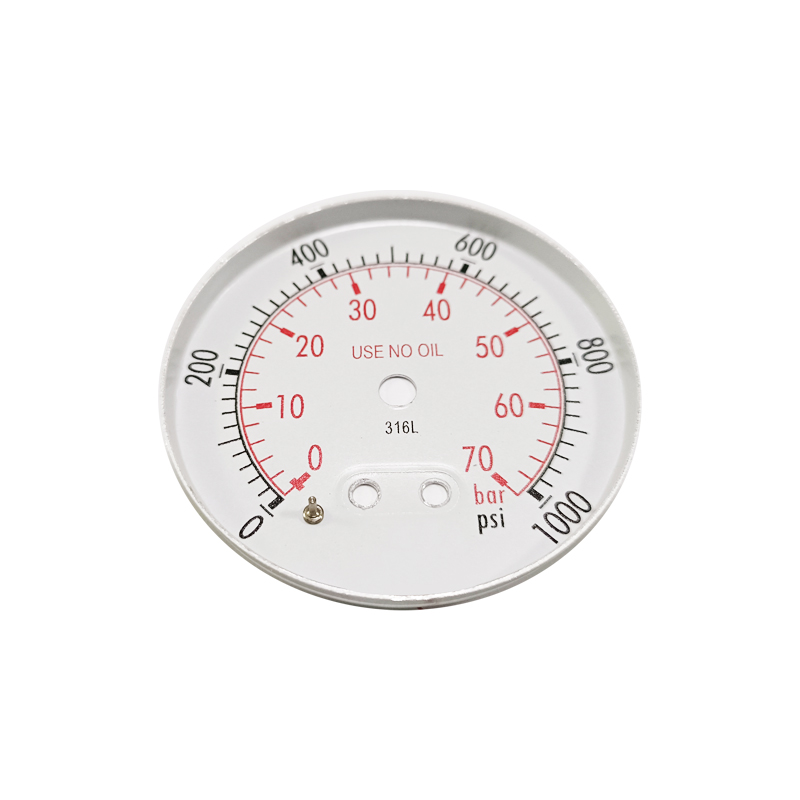
Jul . 21, 2024 01:20 Back to list
Exploring Bourdon Tube Differential Pressure Gauges for Enhanced Pressure Measurement Solutions
Understanding Differential Pressure Gauge Bourdon Tube Products
Differential pressure gauges are crucial instruments in various industrial applications, allowing for the measurement of pressure differences between two points within a system. Among the different technologies used to gauge differential pressure, the Bourdon tube mechanism stands out for its reliability and accuracy. In this article, we will explore the fundamental principles of Bourdon tube differential pressure gauges, their construction, advantages, applications, and maintenance considerations.
Principle of Operation
The Bourdon tube is a curved, hollow metal tube, usually shaped like a C or a spiral. When pressure is applied to the inside of the tube, the curvature of the tube tends to straighten out. This movement is proportional to the pressure applied. In a differential pressure gauge, two Bourdon tubes may be employed—one for each measurement point—allowing the gauge to detect the pressure difference between the two locations. The movement of the Bourdon tube is then converted into a rotational motion of a pointer on a dial, providing a visual indication of the pressure difference.
Construction of Differential Pressure Gauges
Bourdon tube differential pressure gauges typically feature a robust design to withstand harsh operating conditions. The tube is made from high-quality metals such as brass, stainless steel, or bronze, ensuring durability and resistance to corrosion. The gauges also have a diaphragm or isolating mechanism that protects the Bourdon tube from aggressive media, which is essential in applications involving gases or liquids that may cause damage.
The gauge’s dial is usually marked in units of pressure (such as psi, bar, or kPa) and can be customized to suit specific applications. Additionally, many differential pressure gauges include features such as adjustable zero points or linear scales, which enhance their usability and precision.
Advantages of Bourdon Tube Differential Pressure Gauges
One of the primary advantages of Bourdon tube differential pressure gauges is their simplicity and ease of use. They do not require external power sources, as they operate purely on mechanical principles. This feature makes them ideal for remote or hazardous locations where electrical sources may not be available or safe.
differential pressure gauge bourdon tube products

Moreover, Bourdon tube gauges provide relatively quick response times to pressure changes, making them suitable for dynamic applications. Their mechanical design also translates to lower maintenance costs compared to other types of pressure measurement devices, which may require regular calibration or servicing.
Applications
Differential pressure gauges with Bourdon tube mechanisms are widely used across various industries. In the oil and gas sector, they measure pressure drops across filters and separators. In the water treatment industry, they monitor pressure differentials in filtration systems, ensuring effective operation. Additionally, they are prevalent in HVAC systems where pressure differentials across air filters and coils are essential for proper functioning.
Chemical manufacturing also benefits from Bourdon tube gauges, as they can handle a variety of corrosive substances with proper material selection. Hospitals and laboratories utilize these gauges for maintaining essential pressures in gas supply systems, ensuring the safety and reliability of medical devices.
Maintenance Considerations
While Bourdon tube differential pressure gauges are designed to be low-maintenance, certain practices can help ensure their longevity and accuracy. Regular inspections for wear and tear, corrosion, and leaks are essential. Calibration should be performed periodically, especially if the gauge has been subjected to extreme conditions. Finally, ensuring that the gauge is installed correctly and that the pressure connections are secure can prevent potential failures and inaccuracies.
Conclusion
Bourdon tube differential pressure gauges are indispensable tools in diverse industrial sectors, prized for their simplicity, reliability, and effectiveness in measuring pressure differentials. Understanding their construction, operation, and maintenance is crucial for maximizing their utility and ensuring safety in various applications. As industries continue to evolve, the role of these gauges will remain pivotal in monitoring and controlling pressure systems, supporting operational efficiency and safety.
-
High-Precision 5 Valve Manifold Differential Pressure Gauge Suppliers
NewsApr.29,2025
-
High-Precision Diaphragm Vacuum Pressure Gauges Manufacturers & Quotes
NewsApr.29,2025
-
Omega Differential Pressure Gauges High Accuracy & Durability
NewsApr.28,2025
-
Low Pressure Differential Pressure Gauges Precision Solutions & Quotes
NewsApr.28,2025
-
Digital Diaphragm Pressure Gaauge Precision Measurement & OEM Quotes
NewsApr.28,2025
-
Differential Pressure Gauge China Price High-Accuracy & Best Quotes
NewsApr.28,2025
